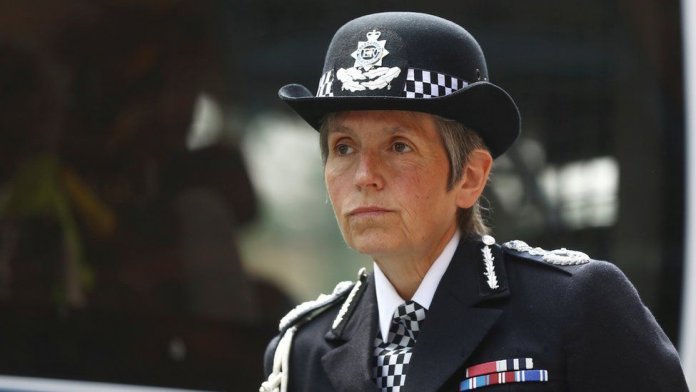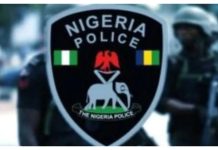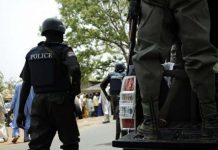Africa-Press Nigeria
The ENDSARS campaign, thrusted into global consciousness by last month’s protests by activists demanding police reform, has rekindled conversation about policing Nigeria. Youths, drawn from across the various socioeconomic strata of the nation’s population, massed on the streets to protest police brutality, as typified by the activities of a special anti-crime outfit of the Nigeria Police Force, Special Anti-Robbery Squad (SARS). The SARS is notorious for framing people, exploiting suspects and for wanton human rights abuses.
The social unrest, which was executed through social media mobilisation, unsettled the government given the fact that the youths adopted a system alien to Nigeria’s protest culture. The amorphous leadership structure of the protesters confounded the government and its security agencies as they scrambled to address the protests that further threatened the national economy just struggling to recover from the double whammy of the COVID-19 pandemic and the price fall in the global oil market.
However, two weeks into the protests, the negative auguries of the nation’s protest culture started manifesting with thugs attacking the peaceful protesers. There are disputatious claims over whether or not the thugs were sponsored by government supporters or those disenchanted with the protests.
The attacks on the protesters, especially in Lagos and Abuja, where videos emerged on the social media on the alleged involvement of government in recruiting and mobilising thugs to attack the protesters, worsened the tension caused by the social unrest. While the government, which had initially agreed to the demands of the protesters, including the scrapping of SARS, was still finding a way to pacify the protesters, hoodlums seized the protest and unleashed an orgy of violence on police personnel and assets. They also attacked, looted and torched many public and private assets. The degeneration of the protest prompted some state governments to declare curfew as a step towards restoring public order.
The imposition of the curfew marked another turning point in the campaign as soldiers were deployed in Lekki Tollgate, one of the epicentres of the protest, to disperse the demonstrators two hours before the commencement of the curfew. The deployment of the soldiers spawned recriminations over whether or not they shot the protesters. While the military initially denied soldiers’ presence at the Lekki Tollgate and the Lagos State Governor, Mr. Babajide Sanwo-Olu, claimed ignorance about their presence, both parties have had to walk bac their positions as the protesters and their allies, who alleged the soldiers killed many and wounded some, mounted campaign on the social media to disprove their claims.
But how did Nigeria arrive at the sorry pass to witness one of the most effective and innovative protests to be organised by its youths? The answers can be found in the nature of the policing system in the country where the federal government controls the law enforcement agency that acts more as the enemy of the people it was set up to protect, rather than as a friend, despite their claim to that effect.
Policing by Consent or by Force?
The Nigeria Police Force, unlike its counterparts in some other countries, really live up to its appellation by the way it deploys brutal and lethal force in the discharge of its responsibility. This operational system has created a trust gap between the police and the same people it is supposed to be protecting and has often pitted them against each other. Although successive administrations and police leaderships have tried to correct the anomalies through various reforms, the results have not been in tandem with the efforts, especially given the half-hearted ways some of the reforms were carried out.
While many have excused the lapses in the police on the grounds of their historical antecedents, others have blamed the poor vision of the nation’s leaders on their inability to give the country a police force that operates what British Home Secretary in 1822, Sir Robert Peel, called policing by consent. Sir Robert’s theory, called the Peelian principles, describes a policeman as a citizen in uniform who exercises his powers over fellow citizens with their implicit consent.
According to advocates of the Peelian principles, policing by consent” is anchored on the idea that “the legitimacy of policing in the eyes of the public is based upon a general consensus of support that follows from transparency about their powers, their integrity in exercising those powers and their accountability for doing so.”
The Peelian principles undergird the policing system in such nations as the United Kingdom, Canada, Australia and New Zealand.
However, it should be noted that the greatest hindrances to Nigeria having a police force that reflects the Peelian principles lay in both the structure of the Nigerian nation and the centrally-controlled agency. Since the federal government is responsible for the recruitment, deployment and management of the police force, many of the personnel are deployed in communities outside their nativity and this neither engenders nor fosters a sense of belonging, especially in a nation wracked with ethno-religious rivalry among its constituent parts.
But if policing in Nigeria is such a tough job, how is it done in other countries with some semblance of similarity with Nigeria either in terms of political structure of ethno-religious diversity? In finding answers to this, we shall look at the policing systems in the United Kingdom, United States, Canada, United Arab Emirates (UAE), and India.
United Kingdom
Unlike Nigeria that has a centralised police force, the policing of the United Kingdom, which as the colonial government created the Nigeria Police Force, structured its police to reflect the legal systems of the kingdom: England and Wales, Northern Ireland and Scotland. Police personnel, serving in regional police services, known as territorial police forces, within one of those jurisdictions are tasked with the responsibility of law enforcement. The police personnel carry out the regular police duties of protecting life and property, sustaining peace and public order as well as preventing and detecting crimes.
Till today, the Peelian principles, discussed earlier, still impinge on the policing process in the UK. The UK Home Office, in 2011, explained the Peelian principles as “the power of the police coming from the common consent of the public, as opposed to the power of the state. It does not mean the consent of an individual.” It, however, added that “no individual can choose to withdraw his or her consent from the police, or from a law.”
A Brief Overview of the UK Police
The British police evolved from a 18th century practice whereby local communities recruit watchmen and constables to guard the people and their property. At this period, the government wasn’t directly involved in policing affairs until later when, following an Act of Parliament, the City of Glasgow set up the first professional police force in the UK. However, the first centrally-controlled police force in the world was set up in Ireland, then a part of the United Kingdom, following the Peace Preservation Act in 1814 for which Peel was largely responsible. Peel expanded his idea in 1822 when he became the Home Secretary by pushing for the passage of the Metropolitan Police Act 1829 that established a full-time, professional and centrally-organised police force for the greater London area known as the Metropolitan Police. Subsequent] legiislations in the 1830s and 1850s birthed policing in boroughs and many counties as well as nationally respectively.
The UK recruited its first women police officers during the First World War. And since the 1940s, police forces in the United Kingdom have been merged and modernised.
Now, the UK policing system is a three-layered structure comprising the territorial police services, which carry out the majority of policing. There are 45 territorial police services as of 2013 that cover a police area (a particular region) and have an independent police authority (England and Wales)
The second is the national law enforcement agencies, including the National Crime Agency and British Transport Police (the latter only operates in Great Britain). The Serious Organised Crime and Police Act 2005 refers to these as “special police forces.”
Lastly, there is the miscellaneous police services, mostly having their foundations in older legislation or common law. These have a responsibility to police specific local areas or activities, such as ports and parks.
Despite the classification, some of these arms of the police have cross-jurisdictional powers. For example, territorial police constables have certain powers of arrest in another one of the UK’s three legal jurisdictions than they were attested in.
The Bitish police have passed through various evolutions since formation. As at 2013 there were 45 territorial police forces in the UK. The territorial English and Welsh police forces were created in their current form by amalgamations made by either the Police Act 1964 or the Local Government Act 1972. Scotland has since merged its eight territorial forces into one. Northern Ireland has always had a single police force since the Partition of Ireland in 1922.
A unique feature of the British policing is that unlike in many other comparable nations, their officers do not carry firearms on standard patrol. They are equipped with ASP batons and CS gas or PAVA spray, among other non-lethal tools.
The police are funded both by the central government and the local government. The central government funding is calculated by a formula based on population and socio-economic factors used to determine the expected cost of policing an area.
Policing in the US
There is a semblance in the evolution of the police in the United States, just as we have in the United Kingdom. This is understandable given the historical ties between the two world powers. The modern police in 4he US evolved from the activities of watchmen, who were organised around 1630s to protect colonies from deviants. One of their cardinal duties was to prevent slaves from escaping from their masters.
However, the first form of policing in the South was known as slave patrol, which began in the colonies of Carolina in 1704. The patrolmen were focused on keeping the slaves in check.
This system, however, lasted till the outbreak of the Civil War and was replaced by the emergence of the Ku Klux Klan.
On the other hand, the emergence of a policing system in the North arose from the need to keep crimes such as mobs, public lewdness, disorderly conduct, and prostitution in check in the wake of the influx of immigrantsto the cities by 1800s. The influx precipitated clashes between the immigrants and original settlers from England and The Netherlands, who accused the former of destroying the society.
With the night watchmen unable to effectively secure the communities, Boston set up a better organised agency in1838 to check crimes.
New York followed suit in 1845 with Chicago, New Orleans and Cincinnati doing same subsequently. By the 1880s, almost every major city in the country had a police force.
Almost all of the police forces were structured similarly, and their main duty was to prevent crime and keep order.
But in 1850s, the cities began the establishment of detective units to investigate crimes.
However, police reforms began in the US in the 1900s through the efforts of August Vollmer, the first police chief of Berkeley, California, regarded as “the father of modern policing.”
He created a system whereby officers patrolled the neighborhoods they lived in on foot and anothervsystem for juveniles to be tried and punished instead of trying them as adults.
Later, federal and state police forces emerged. The state governments started creating their own police forces in the early 1900s to stop the spread of crime in cities.
J. Edgar Hoover further built on Vollmer’s pioneering work with the establishment of the Federal Bureau of Investigation (FBI) in the 1920s. Unlike the Vollmer’s model, which concentrated on social work and psychology, Hoover deployed FBI agents to fight organised crimes. His police officers were less connected to the neighborhoods they worked in as officers patrolled neighborhoods by car.
Later, county police emerged. County police exist only in metropolitan counties and have countywide jurisdiction. For places that have both county police and county sheriff, responsibilities are given to each: The county police are in charge of typical police duties such as patrol and investigations whereas the sheriffs’ department takes care of serving papers and providing security to the courts.
Modern US Police Force
Tensions, caused by racial discriminations that spawned riots and violence, such as the killing of George Floyd, have helped to drive police reforms in the US.
By 1960s, African-Americans had begun to challenge the way police were treating their communities. They protested poor treatment and racial profiling, leading to the outbreak of riots, boycotts and peaceful protests, especially in the South.
Studies carried out in the 1970s also showed that the current policing system was ineffective. This led to the return of community policing, which placed minority officers in minority neighborhoods. This model also incorporated the community in helping police the neighborhood. The police officers were meant to become close and familiar with the residents in the community. This became increasingly popular in the ‘90s. By the early 2000s, two-thirds of police forces across the US implemented community policing policies.







